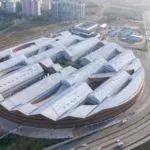The work addresses one of the key challenges of future communication networks — organizing reliable and energy-efficient data exchange among millions of devices and sensors that will lay the foundation of 5G Advanced and 6G technologies.
The authors are Kirill Andreev, Pavel Rybin, and Alexey Frolov from the Project Center for Next Generation Wireless and IoT.
 The classical approach to device-to-device communication requires pre-coordination between the device and the network to allocate resources (channels) for data transmission. In this case, each device must wait its turn — this mechanism creates delays and reduces the speed of response to critical events.
The classical approach to device-to-device communication requires pre-coordination between the device and the network to allocate resources (channels) for data transmission. In this case, each device must wait its turn — this mechanism creates delays and reduces the speed of response to critical events.
The core idea of the book is a new approach, which the authors termed unsourced random access. It allows millions of devices to connect to the network without the need to identify each one.
This approach changes the conventional understanding of wireless communication, which until now has been primarily designed for humans. The focus is now on autonomous devices, sensors, and the Internet of Things.
The monograph combines fundamental theoretical results (including energy-efficiency limits) and practical implementation schemes. This makes the book valuable both for scientists and engineers working on next-generation communication networks.
“This innovative approach represents a fundamental shift from traditional human-centric networks, focusing instead on energy-efficient wireless connectivity for large-scale networks of autonomous devices and sensors,” says Professor Frolov, “the monograph comprehensively covers both theoretical aspects (including fundamental energy-efficiency limits) and practical implementation schemes for real-world applications. This dual focus makes the work valuable for both specialists and researchers developing next-generation wireless systems. The main results presented in the monograph are based on joint research with the Massachusetts Institute of Technology (MIT), Texas A&M University, Technische Universität München (TUM), and the German Aerospace Center (DLR). The work was completed with support from the Russian Science Foundation.”
